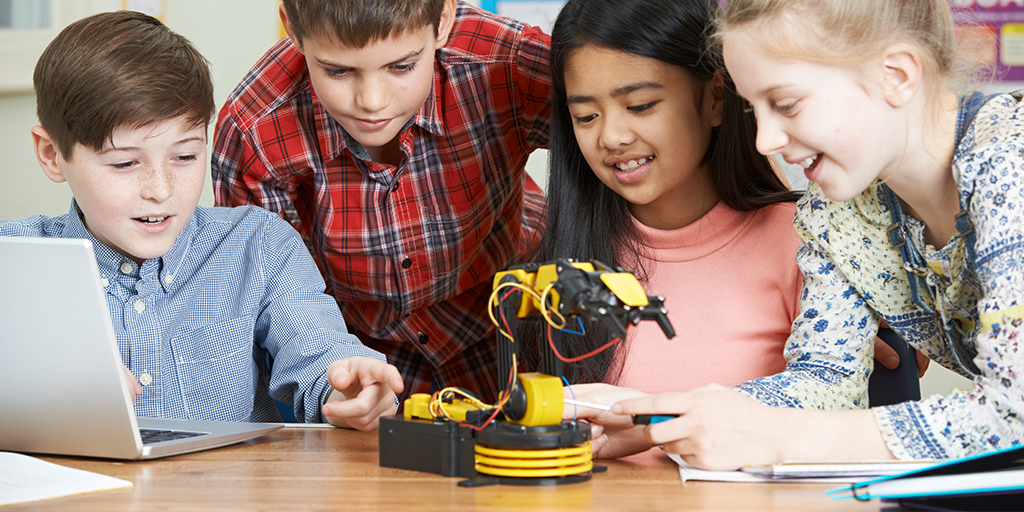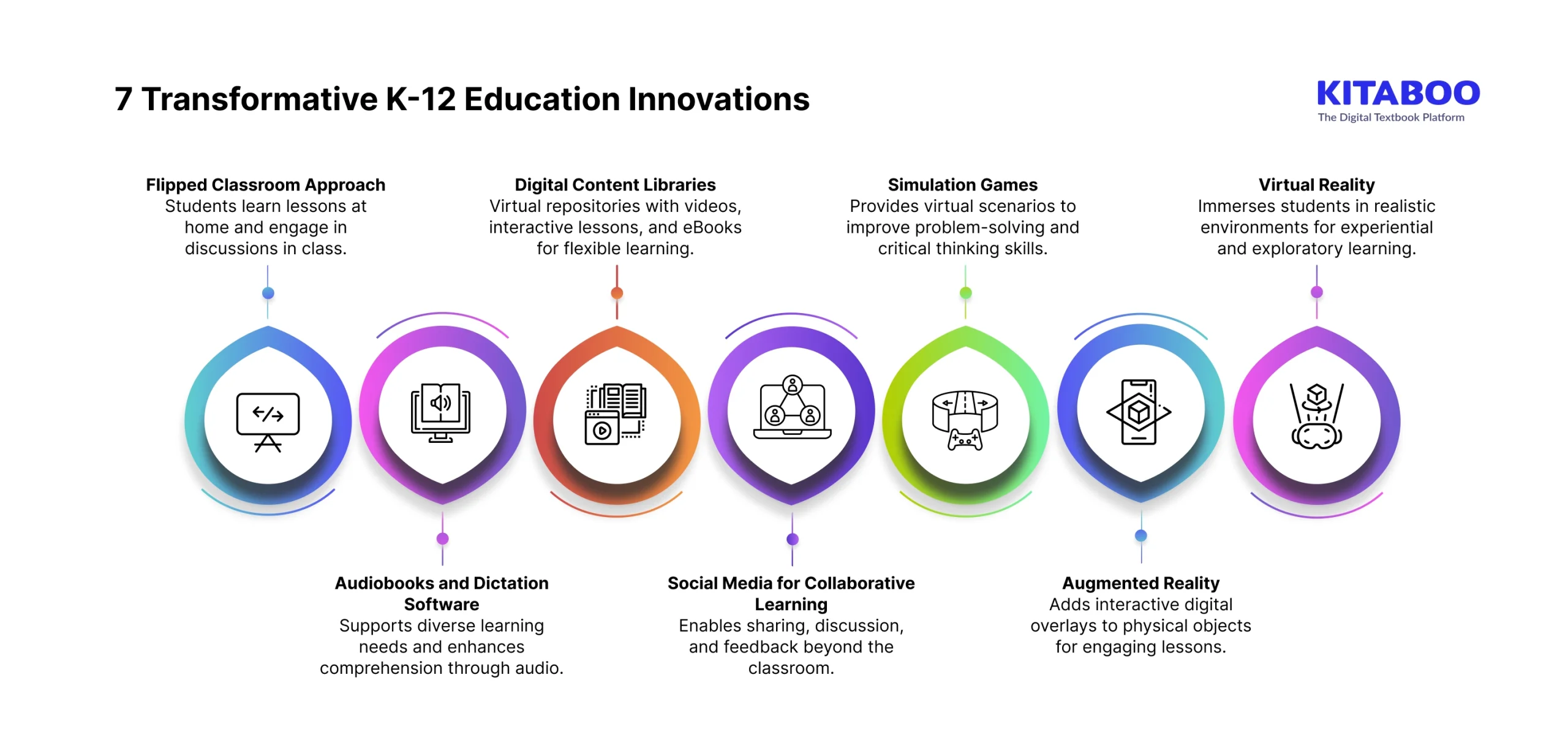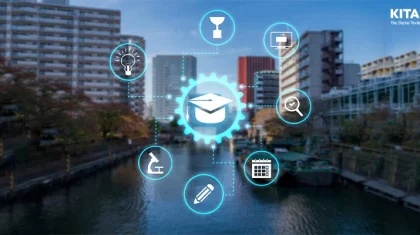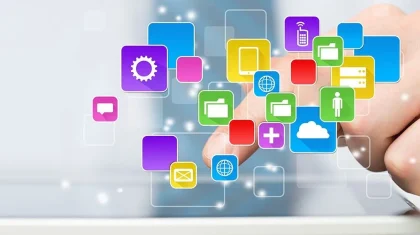
Top 7 Innovations in K-12 Education (2025)
Summarize this blog with your favorite AI:
Top 7 Innovations in K-12 Education – TL;DR
K-12 education has seen remarkable changes with digital tools and modern teaching methods. These K-12 education innovations help students learn actively, improve engagement, and make classrooms interactive.
Flipped classrooms, audiobooks, and digital content libraries support personalized learning and diverse learning styles. Simulation games, augmented reality, and virtual reality provide immersive experiences that enhance understanding. Social media and collaborative platforms encourage interaction and knowledge sharing.
Overall, these innovations prepare students for a digital future while making learning effective and enjoyable.
| Innovation | Key Benefit | Example |
|---|---|---|
| Flipped Classroom | Encourages active learning in class. | Students watch lectures at home and solve problems in class. |
| Audiobooks & Dictation | Supports auditory learning and accessibility. | Students listen to literature and use dictation to write essays. |
| Digital Content Libraries | Provides centralized access to learning materials. | Teachers and students access videos, eBooks, and interactive assignments. |
| Social Media Collaboration | Enhances peer interaction and discussion. | Students collaborate on projects using educational social platforms. |
| Simulation Games | Offers risk-free experiential learning. | Science experiments or historical simulations in a virtual environment. |
| Augmented Reality | Makes abstract concepts interactive. | Visualizing molecules or historical artifacts in 3D. |
| Virtual Reality | Provides an immersive learning experience. | Virtual field trips to pyramids or ecological sites. |
The education sector has seen transformative changes over the past decade, primarily through the integration of digital aids into classrooms. This evolution aims to enhance the teaching and learning experience in schools and universities. The adoption of innovative teaching methods and technologies has been pivotal in fostering a deeper understanding of subjects among students and improving classroom engagement.
1. flipped-classroom-approach
The flipped classroom approach is one of the most impactful K-12 education innovations today. It is a teaching model that inverts the traditional learning structure. It introduces new content outside of class and uses class time for active engagement.
Students learn theoretical concepts at home through recorded lessons, videos, or digital modules. Classroom sessions are then used for discussions, activities, and problem-solving instead of lectures.
Students watch recorded lessons, interactive eBooks, videos, or digital modules in their free time. They get a better understanding of the key concepts before class. This allows classroom time to focus on discussions, problem-solving, and collaborative projects instead of passive listening.
Teachers become facilitators rather than lecturers. They guide students through practical exercises and real-world applications. For example, a math teacher might assign a video explaining algebraic formulas at home. In class, students then solve real-world math problems in groups, applying what they learned.
The flipped classroom model creates a more personalized and interactive learning environment, ensuring that every student actively participates in their educational journey.
2. Audiobooks and Dictation Software
Audiobooks and dictation software are transforming classrooms into more inclusive and dynamic learning spaces. This K-12 education innovation focuses on accessibility, helping students learn through listening and speech rather than only reading and writing.
Audiobooks convert text into clear narration, while dictation tools allow spoken words to become written text instantly. Together, they make learning more flexible and personalized for diverse student needs.
These tools empower students with learning disabilities, visual challenges, or language difficulties. They support auditory learning, improve comprehension, and enhance vocabulary retention. Dictation software also helps students articulate ideas faster without worrying about spelling or typing errors.
For instance, a student struggling with writing can narrate their essay using dictation software. Another can listen to complex science chapters as audiobooks during commutes or study sessions. Teachers can assign listening activities or verbal assignments to make lessons more interactive.
By using these tools, schools can cater to multiple learning styles and abilities. Audiobooks and dictation software create an inclusive ecosystem where every learner can thrive and participate confidently.
Also explore: Digital Publishing Platform for Association and Societies
3. Digital Content Libraries
Digital content libraries are a key K-12 education innovation transforming learning experiences in classrooms. These libraries store eBooks, videos, simulations, and interactive lessons on one platform.
Students can access content anytime, making learning flexible and self-paced. Teachers can customize materials to match each student’s learning style and curriculum needs.
This K-12 education innovation improves knowledge retention by allowing repeated access to lessons. It saves teachers time by organizing resources digitally for easy distribution. Analytics tools in libraries help track student progress and identify learning gaps quickly.
For example, a science teacher can assign videos, virtual experiments, and quizzes for immersive learning. Students can explore complex concepts like chemical reactions through simulations rather than only textbooks.
Digital content libraries enhance collaboration, creativity, and independent learning. They make education interactive, inclusive, and personalized for every student. They also allow schools to scale resources without additional physical materials.
4. Social Media for Collaborative Learning
Social media for collaborative learning is a K-12 education innovation that enables students to work together online. It allows real-time discussions, sharing of ideas, and feedback, fostering a collaborative learning environment. Students remain engaged and motivated by interacting with peers and teachers beyond the classroom.
This approach improves critical thinking, problem-solving, and teamwork. Teachers can track student participation, provide guidance, and address misunderstandings quickly. Social media also helps develop digital literacy and communication skills in students.
For example, a science class can use a private group to share experiment results and discuss hypotheses. Students comment, provide suggestions, and collaborate on projects digitally.
Collaborative learning encourages continuous learning, strengthens peer relationships, and supports personalized feedback. It also enables resource sharing, making study materials more accessible and organized. It creates a flexible learning environment, keeping students engaged even outside school hours.
5. Simulation Games
Simulation games are a K-12 education innovation that immerses students in interactive, risk-free scenarios. These digital tools mimic real-world situations, helping students understand complex concepts through practical experience. Students engage actively, applying knowledge to solve problems while learning consequences of their decisions.
Interactive simulations allow students to experiment safely without real-world risks, making learning engaging and memorable. Teachers can track performance and provide personalized guidance based on gameplay outcomes.
For example, an economics class might use a simulation game to manage a virtual business. Students make decisions on pricing, marketing, production, and investment. They see how their choices affect profits, customer satisfaction, and market position.
Teachers can introduce unexpected events like economic shifts to challenge students further. This hands-on approach helps learners understand real-world business concepts deeply.
This K-12 education innovation encourages creativity, problem-solving, and analytical thinking. It helps students retain concepts longer through hands-on interaction. Simulation games also enhance digital literacy and prepare students for real-life challenges.
Guide:
How to Build an eBook Store
6. Augmented Reality
Augmented Reality (AR) is a K-12 education innovation that overlays digital content onto the real world. It transforms traditional lessons into interactive experiences by adding visuals, animations, or information to physical surroundings. Students can visualize abstract concepts, explore detailed models, and engage actively with learning materials.
Augmented Reality in K-12 classrooms enhances engagement, understanding, and retention by making lessons more dynamic. It supports experiential learning, catering to different learning styles, and encourages curiosity and exploration. Teachers can use AR to create immersive exercises that reinforce classroom teaching.
For example, a biology class can use AR to explore the human heart. Students can point a tablet or smartphone at a diagram to view a 3D beating heart. They can rotate it, zoom in, and see blood flow, valves, and chambers in real-time. This interaction helps them grasp complex anatomy far better than textbook images.
This K-12 education innovation also improves technological literacy and prepares students for future digital careers. AR makes learning memorable, interactive, and practical, bridging theory and real-world visualization.
7. Virtual Reality
Virtual Reality (VR) is a K-12 education innovation that immerses students in fully interactive digital worlds. It replaces traditional classroom views with realistic 3D simulations, enabling hands-on learning experiences.
It allows students to explore environments and situations impossible in a physical classroom. Virtual reality in K-12 learning makes abstract concepts tangible and easy to comprehend.
This innovation improves memory retention, comprehension, problem-solving, and critical thinking skills. It encourages collaboration, creativity, and technological literacy. VR also supports differentiated learning, letting students progress at their own pace while exploring complex concepts.
For example, history students can virtually visit ancient Egypt. They can walk inside pyramids, examine hieroglyphics, and explore temples. Geography students can travel across continents, observe ecosystems, and interact with terrain models.
Science learners can perform virtual chemistry experiments safely, seeing reactions in real-time. These experiences make learning engaging, memorable, and highly interactive.
By integrating VR, educators leverage a K-12 education innovation that combines visualization, interaction, and experiential learning. Students gain a deeper understanding, higher engagement, and practical skills applicable beyond the classroom.
The recent years have seen many innovations in the field of technology. A lot of these innovations can be leveraged effectively in K-12 education. Today, the curriculum is designed in such a way that the concepts that are taught can be applied not only in classrooms but also in real-lives. K-12 students now have the opportunity to explore and enhance their knowledge with multiple digital resources to support them in their learning journey.
Educational institutes are incorporating the top trends in technology in order to improve the way subjects are taught as well to enhance the learning experience. By using multiple digital techniques that can provide an intuitive and immersive learning experience, you can provide the best opportunities for effective learning.
Conclusion
The recent years have seen many innovations in the field of technology. A lot of these innovations can be leveraged effectively in K-12 education. Today, the curriculum is designed in such a way that the concepts that are taught can be applied not only in classrooms but also in real life.
K-12 students now have the opportunity to explore and enhance their knowledge with multiple digital resources to support them in their learning journey.
Educational institutes are incorporating the top trends in technology in order to improve the way subjects are taught as well to enhance the learning experience. By using multiple digital techniques that can provide an intuitive and immersive learning experience, you can provide the best opportunities for effective learning.
Experience the true power of these innovations firsthand and transform your learning programs today. Book an exclusive demo with KITABOO experts now!
Suggested Reads:
- Fixed layout vs Reflowable layout
- Top 10 Corporate Training & Development Trends
- 10 Best Andriod ePUB Readers
- Difference between WCAG, Section 508 & ADA
- What is Digital Reading?
- How to Create Interactive Employee Training Modules
- Advantages of eBooks Over Printed Books
- Trends in Education Technology
- ePub for Education
- K12 Publishers
- Associations & Societies
- Trade Publishers
- Training Companies
- Content Aggregators
Discover how a mobile-first training platform can help your organization.
KITABOO is a cloud-based platform to create, deliver & track mobile-first interactive training content.



![Top 5 Free Publishing Sites for Independent Publishing [2026]](https://kitaboo.com/wp-content/uploads/2025/09/Top-5-Free-Publishing-Sites-for-Independent-Publishing-2026-420x235.webp)
